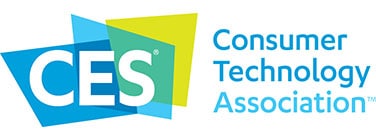SILVER SPRING, MARYLAND — During the April 21 FDA public workshop several key stakeholders weighed in on the issues surrounding the regulation of hearing aids and PSAPs. And, as per usual, in true democratic fashion, the U.S. Food & Drug Administration (FDA) will take public comments into consideration before making final decisions. According to their website, comments related to the Streamlining Regulations for Good Manufacturing Practices for Hearing Aids Workshop have been extended to June 30, 2016. However, since the April workshop nearly 50 comments have been posted electronically at their website. They can be viewed here.
These comments, which are authored by private citizens, professional organizations, consumer advocacy groups and businesses, provide a range of opinions both supportive and in opposition to changing the current FDA hearing aid regulations, in place since 1977, and the FDA’s 2013 PSAP Draft Guidance.
Given the potential regulatory changes to the professions of audiology and hearing aid dispensing, we provide our readers with a review of the statements made by some of the familiar stakeholders as well as notable upstarts.
Wide Variety of Opinions
Not surprisingly, entities with the most at risk over any impending changes to current hearing aid regulations voiced the most vehement opposition to regulatory change and offered strong support the 2013 FDA Draft Guidance. (Recall that the 2013 Draft Guidance states that “PSAPs are intended to amplify environmental sound for non-hearing impaired consumers”).
The Hearing Industries Association (HIA), the national trade association of hearing aids and other associated products, emphasized the apparent risks associated with Do-It-Yourself (DIY) solutions, like PSAPs. Their full public comment is available here.
Citing survey data from their members outlining the risks associated with purchasing PSAPs without first seeing a hearing professional to rule out a medical complication, the International Hearing Society (IHS) offered similar opposition to the PCAST recommendation of the creation of a new category of over-the-counter hearing aids, and support for the adoption of the 2013 PSAP Draft Guidance. The IHS statement can be found here. Similarly, Amplifon Americas, with hundreds of Miracle Ear and Elite Hearing Network locations around the U.S. issued a 70-page tome opposing any changes to the 1977 FDA regulations.
On the other end of the spectrum, advocacy groups such as AARP and HLAA focused on affordability and accessibility issues in their public comments.
Stating that the 2013 Draft Guidance is a barrier for innovative hearing technologies coming to market, in their public comments, AARP urged the FDA to withdraw their PSAP guidelines because they create unnecessary limits to consumer access. The Hearing Loss Association of America (HLAA) echoed similar sentiments in their public comments, stating they supported the PCASTs recommendation of creating a new category of “basic” over-the-counter hearing aids. HLAAs public comments can be viewed here.
 Consistent with consumer advocacy groups, the Consumer Technology Association (CTA) offered strong support for the PCAST recommendations in their public comments.
Consistent with consumer advocacy groups, the Consumer Technology Association (CTA) offered strong support for the PCAST recommendations in their public comments.
Perhaps the most eye-opening public comments came from consumer audio giant, Bose. Using dozens of citations from the hearing science and audiology literature, Bose built a case for the safe and effective use of over-the-counter hearing aids for a wide variety of hearing losses – beyond “basic” hearing aids for mild to moderate age-related hearing loss. Their comment to the FDA can be found here
The American Academy of Audiology (AAA) and the Academy of Doctors of Audiology also weighed in on the issue. In their comments, AAA asked that in order to avert consumer confusion “there remain only two classes of amplification devices: hearing aids and personal sound amplification systems.”
In contrast, ADA expressed concerns over the FDAs “intended use” doctrine, which is part of their 2013 Draft Guidance and backed a change to regulating devices around their “actual use”. In their public comment, ADA offered qualified support for the creation of a new category of direct-to-consumer hearing aids.
Bridging the Divide?
In summary, opinions typically coalesced around two camps: Those that believe the harms associated with direct-to-consumer devices outweigh affordability and access issues, thus the status quo should remain relatively unchanged. The second camp, alternatively, tends to believe affordability and access trump any potential harm caused to those choosing not to see a professional prior to purchasing traditional hearing aids.
Stay tuned. The next round of meaningful debate will likely center on the public release of the report by the Institute of Medicine’s Committee on Accessible and Affordable Hearing Health Care for Adults, which will take place at 11:00 AM EDT, June 2, 2016. You can register to attend this event via webcast here.
*title image courtesy blog.wsj






